Ali Chouman
Semantic Routing for Enhanced Performance of LLM-Assisted Intent-Based 5G Core Network Management and Orchestration
Apr 24, 2024Abstract:Large language models (LLMs) are rapidly emerging in Artificial Intelligence (AI) applications, especially in the fields of natural language processing and generative AI. Not limited to text generation applications, these models inherently possess the opportunity to leverage prompt engineering, where the inputs of such models can be appropriately structured to articulate a model's purpose explicitly. A prominent example of this is intent-based networking, an emerging approach for automating and maintaining network operations and management. This paper presents semantic routing to achieve enhanced performance in LLM-assisted intent-based management and orchestration of 5G core networks. This work establishes an end-to-end intent extraction framework and presents a diverse dataset of sample user intents accompanied by a thorough analysis of the effects of encoders and quantization on overall system performance. The results show that using a semantic router improves the accuracy and efficiency of the LLM deployment compared to stand-alone LLMs with prompting architectures.
Towards Intent-Based Network Management: Large Language Models for Intent Extraction in 5G Core Networks
Mar 04, 2024Abstract:The integration of Machine Learning and Artificial Intelligence (ML/AI) into fifth-generation (5G) networks has made evident the limitations of network intelligence with ever-increasing, strenuous requirements for current and next-generation devices. This transition to ubiquitous intelligence demands high connectivity, synchronicity, and end-to-end communication between users and network operators, and will pave the way towards full network automation without human intervention. Intent-based networking is a key factor in the reduction of human actions, roles, and responsibilities while shifting towards novel extraction and interpretation of automated network management. This paper presents the development of a custom Large Language Model (LLM) for 5G and next-generation intent-based networking and provides insights into future LLM developments and integrations to realize end-to-end intent-based networking for fully automated network intelligence.
An NWDAF Approach to 5G Core Network Signaling Traffic: Analysis and Characterization
Sep 29, 2022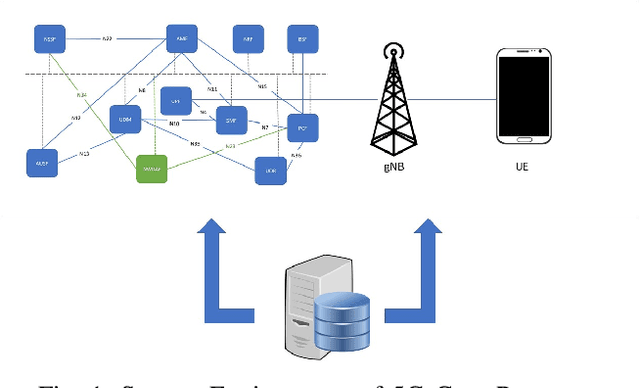
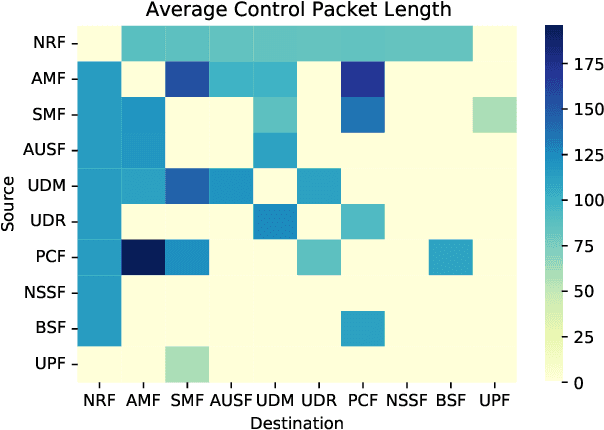
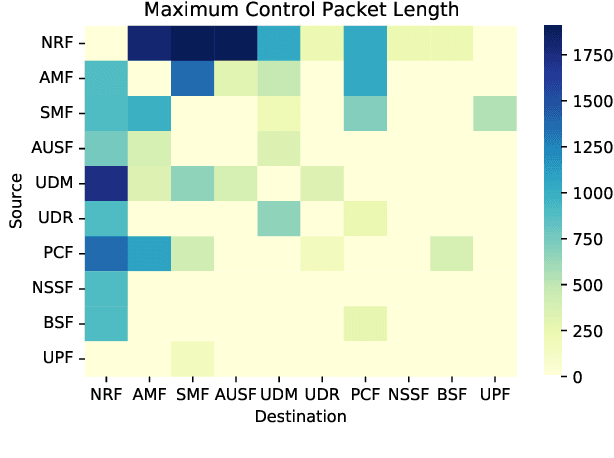
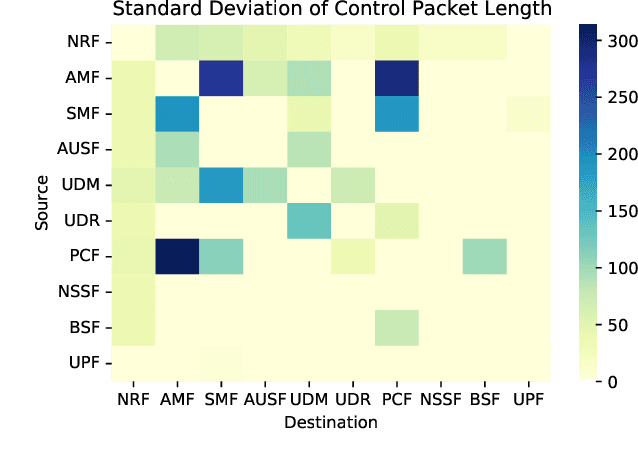
Abstract:Data-driven approaches and paradigms have become promising solutions to efficient network performances through optimization. These approaches focus on state-of-the-art machine learning techniques that can address the needs of 5G networks and the networks of tomorrow, such as proactive load balancing. In contrast to model-based approaches, data-driven approaches do not need accurate models to tackle the target problem, and their associated architectures provide a flexibility of available system parameters that improve the feasibility of learning-based algorithms in mobile wireless networks. The work presented in this paper focuses on demonstrating a working system prototype of the 5G Core (5GC) network and the Network Data Analytics Function (NWDAF) used to bring the benefits of data-driven techniques to fruition. Analyses of the network-generated data explore core intra-network interactions through unsupervised learning, clustering, and evaluate these results as insights for future opportunities and works.
Towards Supporting Intelligence in 5G/6G Core Networks: NWDAF Implementation and Initial Analysis
May 30, 2022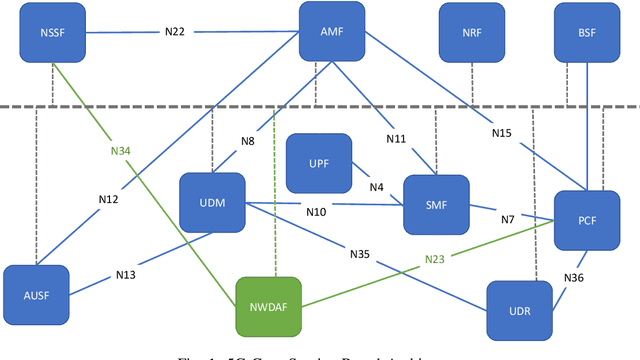
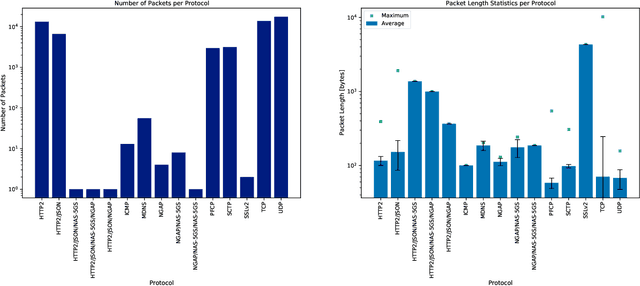
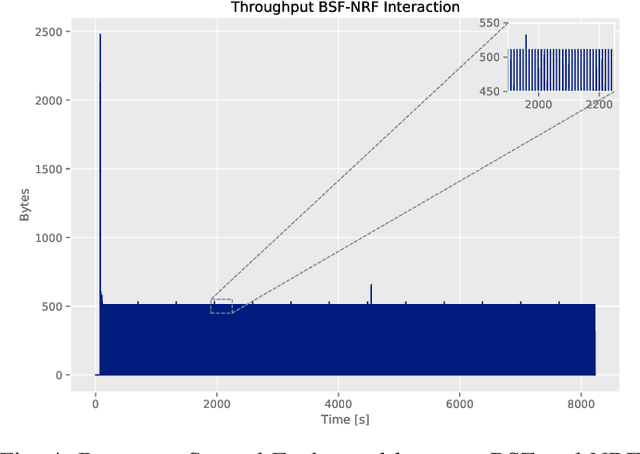
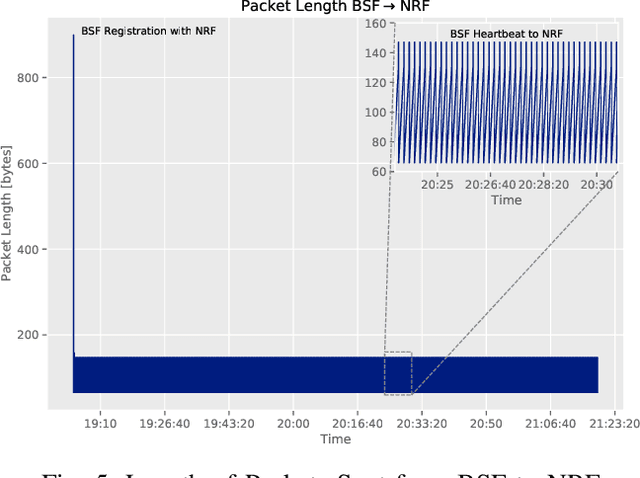
Abstract:Wireless networks, in the fifth-generation and beyond, must support diverse network applications which will support the numerous and demanding connections of today's and tomorrow's devices. Requirements such as high data rates, low latencies, and reliability are crucial considerations and artificial intelligence is incorporated to achieve these requirements for a large number of connected devices. Specifically, intelligent methods and frameworks for advanced analysis are employed by the 5G Core Network Data Analytics Function (NWDAF) to detect patterns and ascribe detailed action information to accommodate end users and improve network performance. To this end, the work presented in this paper incorporates a functional NWDAF into a 5G network developed using open source software. Furthermore, an analysis of the network data collected by the NWDAF and the valuable insights which can be drawn from it have been presented with detailed Network Function interactions. An example application of such insights used for intelligent network management is outlined. Finally, the expected limitations of 5G networks are discussed as motivation for the development of 6G networks.
 Add to Chrome
Add to Chrome Add to Firefox
Add to Firefox Add to Edge
Add to Edge